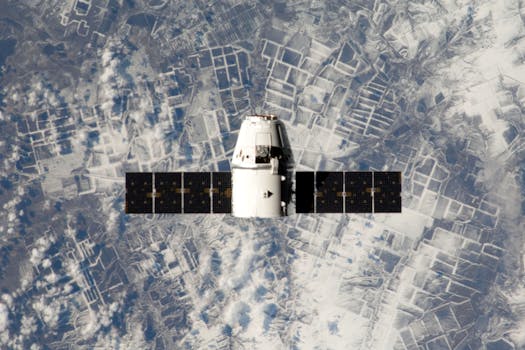From Geostationary to Low Earth Orbit: The Evolution of Satellite Telecommunications in 2023 – Satellite

From Geostationary to Low Earth Orbit: The Evolution of Satellite Telecommunications in 2023 – Satellite
Satellite telecommunications have come a long way since the launch of the first commercial communications satellite, Intelsat 1, in 1965. The focus keyword Satellite Telecommunications is crucial in understanding the evolution of this technology. Initially, satellites were placed in geostationary orbit, which allowed for continuous coverage of a specific region on Earth. However, with the advancement of technology, the trend has shifted towards low earth orbit (LEO) satellites, which offer several advantages over their geostationary counterparts.
The geostationary orbit, approximately 36,000 kilometers above the equator, was the preferred choice for satellite telecommunications due to its ability to provide continuous coverage of a specific region. Satellites in this orbit can maintain a fixed position relative to a point on Earth, making them ideal for telecommunications, broadcasting, and weather forecasting. However, geostationary satellites have some limitations, such as high latency, limited bandwidth, and high costs associated with launching and maintaining them.
In recent years, the satellite industry has witnessed a significant shift towards LEO satellites, which orbit the Earth at an altitude of approximately 160 to 2,000 kilometers. LEO satellites have several advantages over geostationary satellites, including lower latency, higher bandwidth, and reduced costs. The lower altitude of LEO satellites results in lower latency, making them more suitable for real-time communications and applications that require fast data transfer. Additionally, LEO satellites can provide higher bandwidth and faster data transfer rates, making them ideal for applications such as broadband internet, IoT, and 5G connectivity.
Advantages of Low Earth Orbit Satellites
LEO satellites have several advantages that make them an attractive option for satellite telecommunications. One of the primary advantages is the lower latency, which is critical for real-time communications and applications that require fast data transfer. LEO satellites can provide latency as low as 20-30 milliseconds, compared to the 200-300 milliseconds experienced by geostationary satellites. This reduced latency makes LEO satellites more suitable for applications such as video conferencing, online gaming, and virtual reality.
Another significant advantage of LEO satellites is the higher bandwidth and faster data transfer rates they can provide. LEO satellites can offer bandwidths of up to several gigabits per second, making them ideal for applications such as broadband internet, IoT, and 5G connectivity. The higher bandwidth and faster data transfer rates of LEO satellites also make them more suitable for applications that require high-speed data transfer, such as cloud computing and data analytics.
Challenges and Opportunities
While LEO satellites offer several advantages, they also pose some challenges and opportunities for the satellite industry. One of the primary challenges is the need for a larger constellation of satellites to provide continuous coverage of the Earth. LEO satellites have a shorter lifespan and require more frequent replacements, which can increase the costs associated with launching and maintaining them. However, this challenge also presents an opportunity for the development of new technologies and business models, such as satellite constellations and satellite-as-a-service.
The shift towards LEO satellites also presents opportunities for new applications and services, such as satellite-based broadband internet, IoT, and 5G connectivity. The higher bandwidth and faster data transfer rates of LEO satellites make them ideal for these applications, which require fast and reliable connectivity. Additionally, the reduced latency of LEO satellites makes them more suitable for real-time communications and applications that require fast data transfer.
Conclusion
In conclusion, the evolution of satellite telecommunications has undergone significant transformations, from geostationary to low earth orbit. LEO satellites offer several advantages over geostationary satellites, including lower latency, higher bandwidth, and reduced costs. While LEO satellites pose some challenges, they also present opportunities for new applications and services, such as satellite-based broadband internet, IoT, and 5G connectivity. As the satellite industry continues to evolve, it is likely that LEO satellites will play a critical role in shaping the future of satellite telecommunications.






